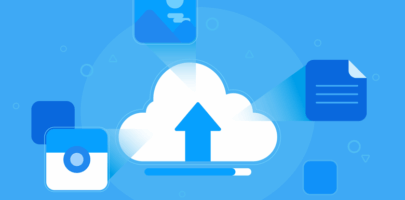Get news, updates, and insights delivered straight to your inbox.
8 Digital Asset Management Software Benefits

If you’ve ever spent more than 5 seconds looking for an important file at work, you know first hand how frustrating it can be to not be able to find what you’re looking for. It’s a waste of time and money, and frankly not a problem that should exist in 2021.
Now is the time to leverage the many advantages of digital asset management software. But with so many different types of software available nowadays, you may be asking yourself, why is digital asset management necessary for my organization? Is it really worth the money? In short, yes. Let’s investigate how a DAM benefits your organization and learn about the 8 key advantages of a DAM software.
Why is Digital Asset Management Important?
The digital age has brought about many changes in how we do things. One of those changes is how businesses manage their digital assets. Digital asset management has become necessary for any business that wants to stay organized while scaling and managing teams. With so many assets being created every day, it’s important to have an efficient system to store your data safely and securely. A DAM software allows you to do this in a single location.
8 Key Advantages of a Digital Asset Management Solution
1. Eliminates Information Silos
Every organization suffers from some degree of information fragmentation. It occurs naturally when only some departments, teams, or levels of management have access to varying pieces of information. While this is sometimes necessary for confidentiality and legal purposes, eliminating information silos can reduce the likelihood of duplicating information or having multiple versions of the same files across various platforms.
2. Ensures Cohesiveness
Even when everyone works together in the same physical office space, cohesiveness requires effort to maintain. When every authorized person has easy access to company files, it becomes easier to ensure everyone is on the same page. Employees can localize files and share knowledge with customers knowing that they are remaining compliant and adhering to guidelines. Additionally, a DAM solution ensures that internal teams are accessing updated documents and are advising accordingly.
3. Facilitates Effective Collaboration
One of the downsides to combining remote work and collaboration is that it can be hard to keep track of files. Using a DAM software makes it easier to organize and retrieve the files your team needs, no matter where they are. This, in turn, improves team productivity and can even boost creativity.
4. Eliminates the Cost of Missing Files
As team members continuously produce digital assets, having more documents raises the likelihood of misplacing them. Misplaced files can be costly. DAM solution can support the creation and storage of multiple assets in a searchable and secure platform.
5. Protects Your Important Files
There are several platforms in the market that provide search functions with their storage options. The downside to these is that it can be challenging to keep track of who has access to what. DAM software makes it easier to determine authorization with predetermined categories. Keep in mind that employees often create vulnerabilities in traditional cloud-based storage systems by providing access via links that anyone can access. DAM software can eliminate this practice by providing safer and more effective permission access.
6. Improves Scalability
As an organization expands, it takes on a large inflow of files. When these files stack up, it’s common to outgrow simple storage solutions and something more robust is required. DAM software becomes a necessary tool to keep track of files across all departments.
7. Leverages Metadata
The less you know about a file, the harder it becomes to find. DAM software stores metadata from documents, which can make it easier to organize and find the files you need. Different types of metadata about each asset such as filename, file type, tags, or a description, improves the search experience by delivering the desired results. Metadata tags specifically can help organizations with multiple creative workflows keep things on track, by tagging with specific descriptors. Additionally, AI can also assist in tagging assets, helping users who have files coming from multiple sources stay organized.
8. Tracks Performance
Integrating a DAM software with analytics can help managers make data-driven decisions. Informed by the right metrics, managers can determine which documents to utilize more or optimize based on how they’re being used. The data can also inform changes on re-organizing important files or setting permission access.
When you consider the advantages of digital asset management, it becomes easy to see why so many companies have invested in this tool. At Marcom, we have perfected the art of making it easier for teams to store, organize and retrieve the files they need. Check out our DAM solution to see how we can transform your organization today.
You might also like


